Vienna State Opera
Tags : Shows & Theatres
Timings : Guided Tours operate at different timings each month.
It can be checker here.
Tickets (Tours) :
General: EUR 13
Senior Citizen: EUR 9
Discount tickets for children, students, and persons up to the age of 27: EUR 7
Ways to Experience this attraction
Vienna State Opera, Vienna Overview
Situated amidst the renowned Ring Boulevard, the Vienna State Opera is one of the must-see attractions in the country. Its remarkable architecture has tremendous aesthetic significance, and the Vienna State Opera ranks amongst the world’s top Opera Houses.
Visitors can dwell upon the intricate sculptures, enjoy live performances, and even go on a guided tour. It was established in 1869 and stores rich history and cultural significance. The main highlights of the Vienna State Opera include the incredible staircase, grand auditorium, and interior decor. The best time to visit is during April, May, and June to witness the 150 member opera and a ballet performance.
The Vienna State Opera is regarded as one of the busiest globally as it showcases a new performance every week. History has it that the building was commemorated by Mozart’s piece Don Giovanni as ordered by the Royal Emperor at that time. The establishment of the Vienna State Opera was the first monument to be put up through the Emperor and also helped plan the rest of the Boulevard. The Viennese Opera Ball is an annual event and a memorable occasion to be witnessed for locals and tourists. With the popular guided tour offered, visitors can cruise through several historical periods of Vienna and observe the world’s largest repertoire theatre. With its symmetry is architecture and excellent planning into the aesthetic appeal, every nook and cranny of the Vienna State Opera is postcard-worthy. Any visit to Vienna is incomplete without a trip to the Vienna State Opera!
Read More on Vienna State Opera
Dress Code at the Vienna State Opera
History of Vienna State Opera
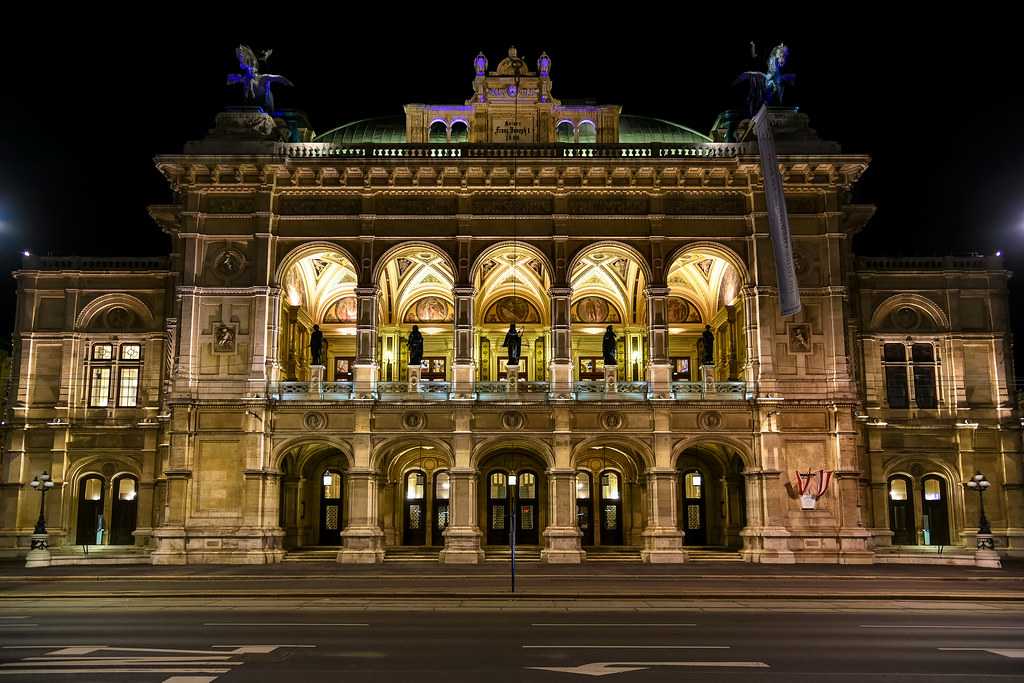
The Vienna State Opera is entwined with rich cultural and political history. After its establishment in 1869, the state operas saw many successes and tragedies. Neither of its architects could see the Vienna State Opera after its completion. However, its significance is that it was the first building sanctioned by the royalty, and also helped plan the entire Ring Boulevard. Tragically, in World War II, the entire building was set on fire by the Allies. It burnt the auditorium, stairways, the interior decor, and also more than 120 operas and 150 thousand costumes.
Seeing several periods in history, the State Opera was again restored and rebuilt. Today the Opera functions in all its glory, with more than 60 performances taking place every year.
Architecture of Vienna State Opera
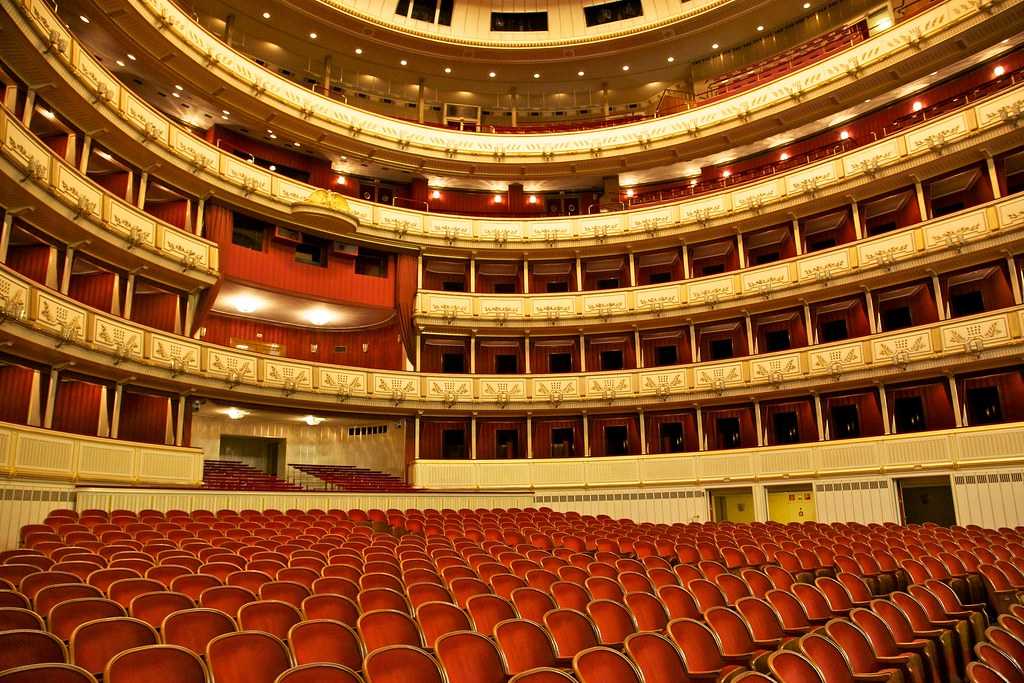
The Vienna State Opera originally named the Vienna Court Opera courtesy to its monarch lineage, was built at a time with heavy neo-renaissance influence. Visitors are often intrigued by the State Opera’s architectural history as the construction took place in two phases. The monument was rebuilt after a tragic fire broke out. Its architects included Eduard Van Der Null, Erich Boltenstern, August Sicard von Sicardsburg, and Josef Hlavka.
As the first Opera built in the city, the entire construction has several awe-worthy features. While the original auditorium, staircases, and more were damaged, the reconstruction through modern technology helped preserve the replicas. Everything from the rider statues, Hahnel statues, marble staircase, tea room, foyer, and more reflects the revival renaissance influence.
Even after the unfortunate fire which destroyed most of the Opera’s interiors, the front of the building remained intact and still in its original form. With curved arches, intricate column details, and blue statues donning the corners; the Opera House remains as it was when inaugurated as the first building on Ring Boulevard.
1. The Two Horsemen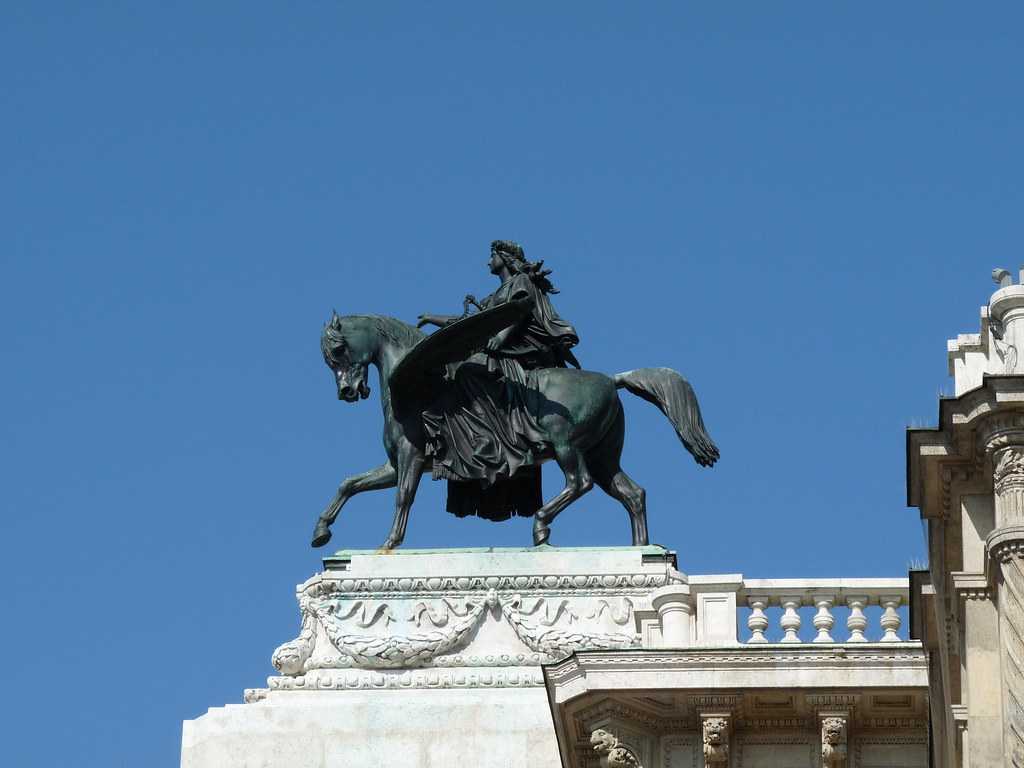
One of the most sought after and unique features of the Opera House is the Two Horsemen statue. They were placed on the monument in 1876 and created by the artist Ernst Julius Hahnel. The statue depicts two horsemen riding winged horses of Erato. The idea is to symbolize that they were guided by Harmony and the Muse of Poetry.
2. Hanhel’s Five Statues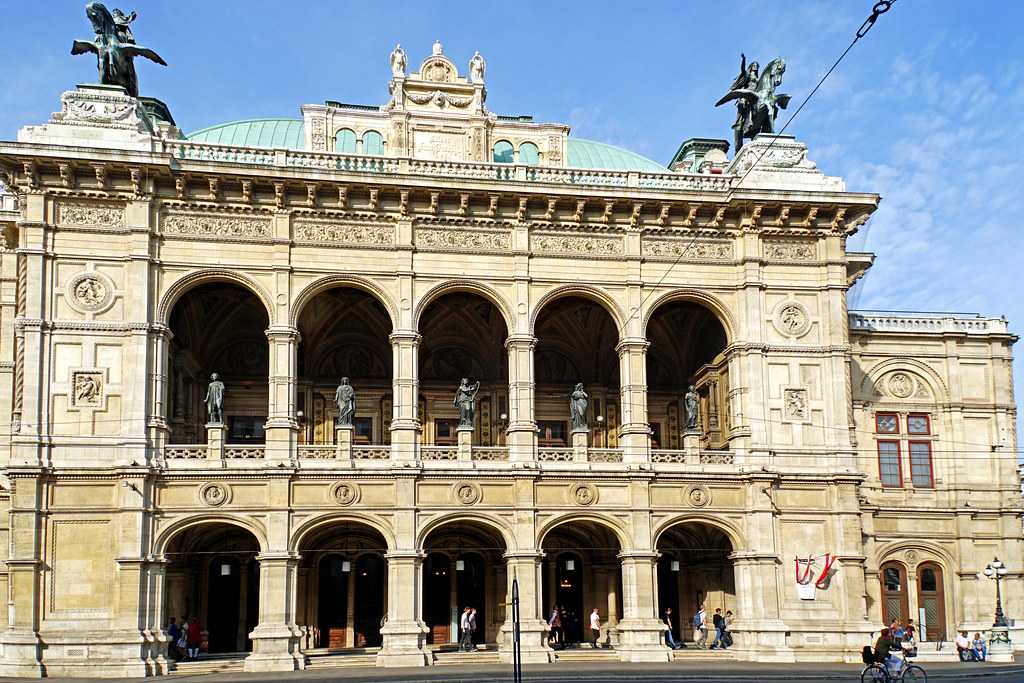
Hanhel’s Five Statues are another prominent highlight of the Vienna State Opera which one cannot miss. The five statues are situated between the arches, and each of them represents a virtue; heroism, tragedy, fantasy, comedy, and love.
3. Tea Room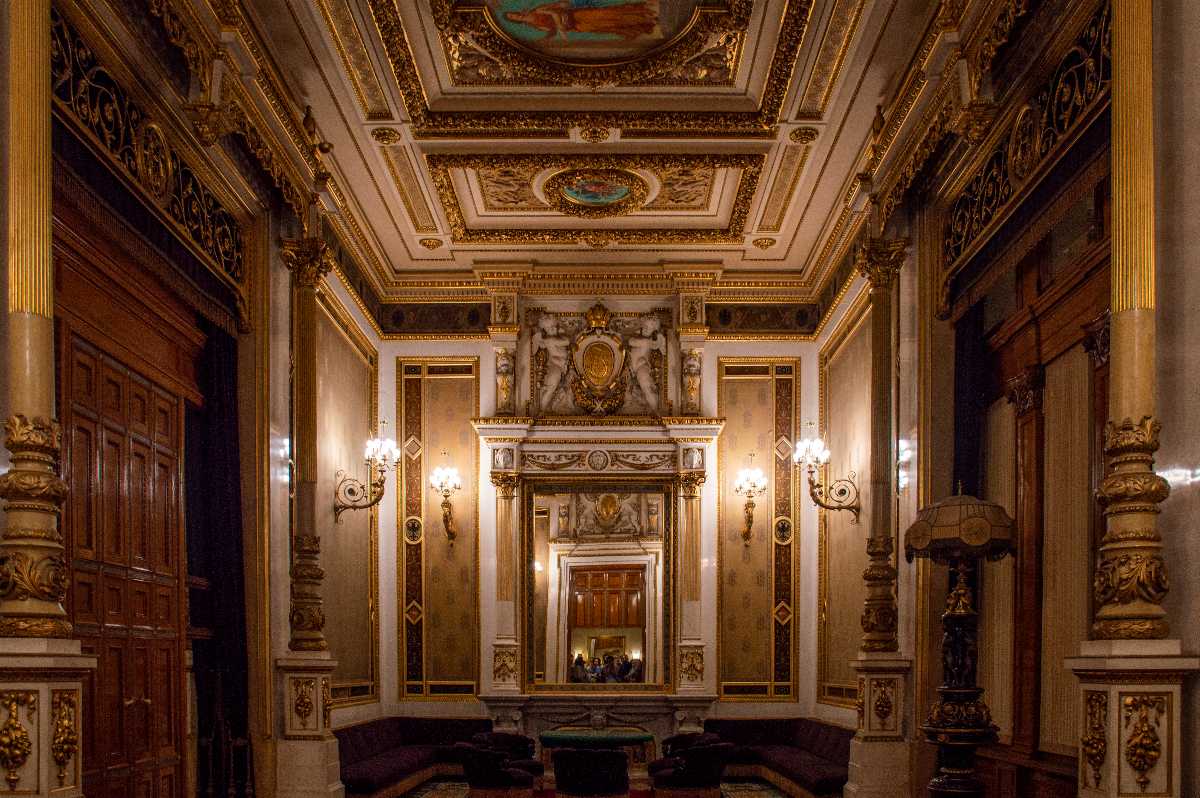
The Tea Room is a renowned element of the Opera House and is only shown during the guided tours offered. It is the room where the Emperor once used to have tea, and is maintained in its original form. The interiors have gold embroidery on all walls and panels, the coat of arms, allegorical paintings on the ceiling, and even the Emperor’s monogram.
4. Marble Staircase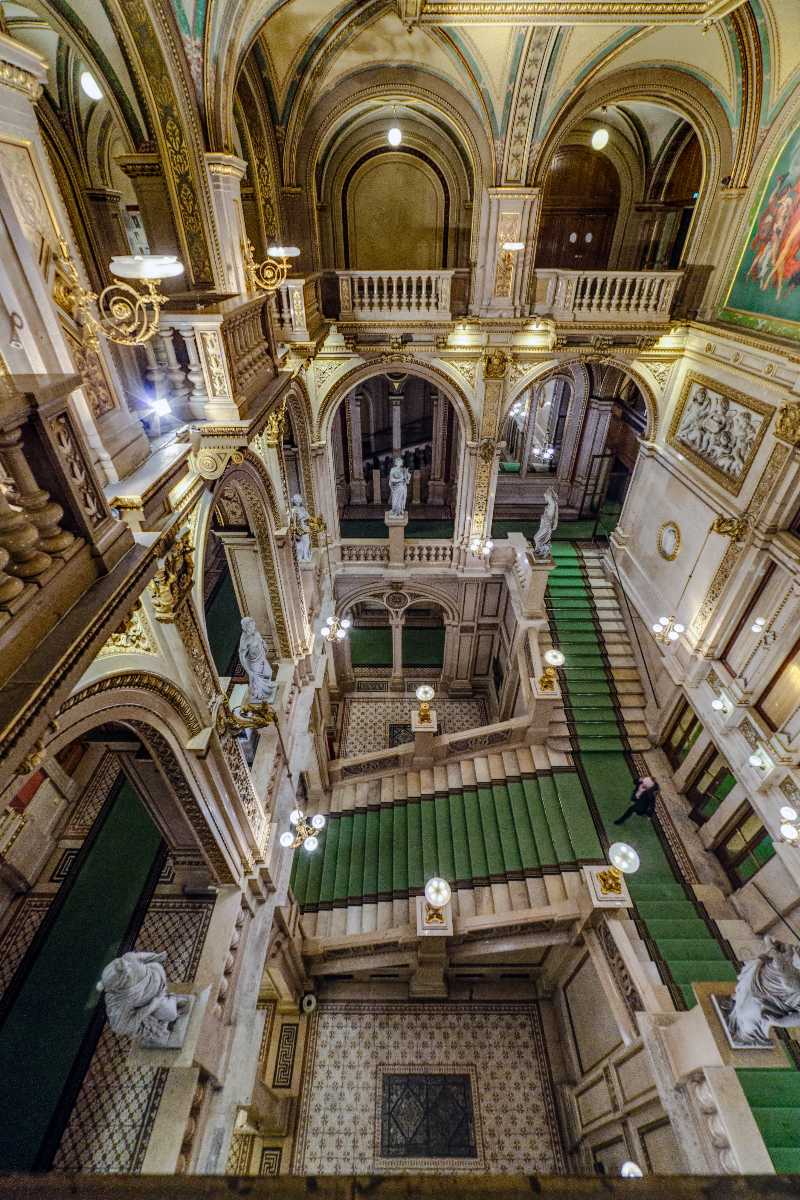
The grand staircase separates the Vienna State Opera from other valuable buildings. With its elegant design and construction, visitors often like to click pictures here. Dotted along the stairs are statues representing the themes of dance, music, and other arts.
5. FoyerThe Foyer is an essential highlight of the construction, especially for the history buffs. Depicting photographs and performances of 14 renowned composers, the gold plated interior is hard to miss. It also displays scenes, including Mozart, Beethoven, and more.
6. Frescoes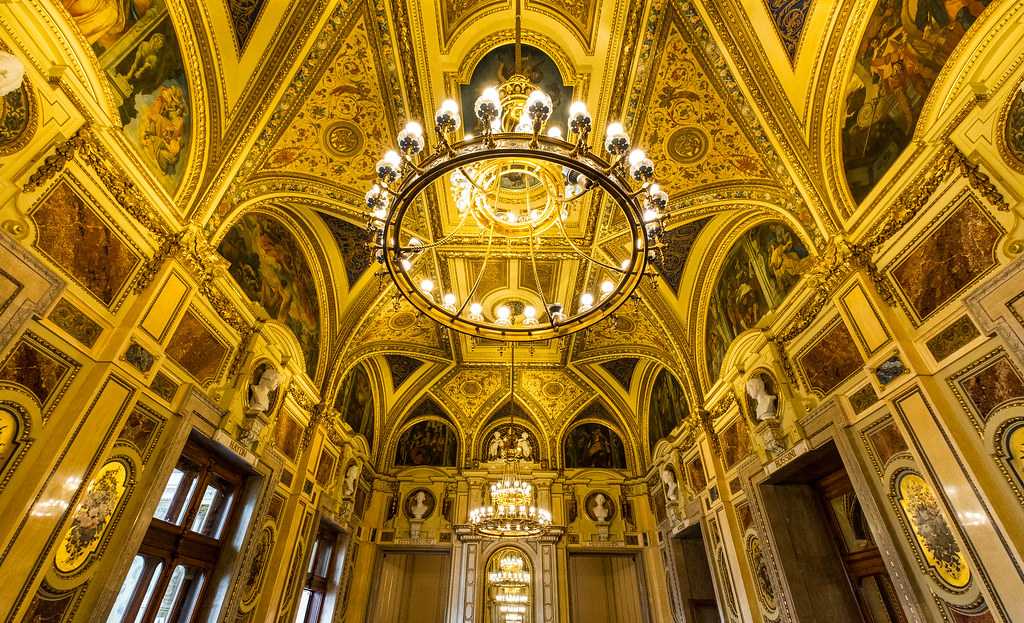
One of the important artistic elements of the Vienna State Opera are the intricate frescoes. The most popular scenery is of Papageno rescued from a suicide attempt. A ceiling full of mythical paintings and exceptional art designs are illustrated and shown to the visitors during the guided tour.
Tips and Note of Caution When Visiting Vienna State Opera
- Tickets can be reserved directly from the Vienna State Opera website. However, it is best to secure a ticket two months prior to a show as visitors will then be able to pick a seat as per their preference.
- If the seat tickets are sold out, it is best to pick a standing ticket. Standing tickets, however, are advised only for those who can stay standing for more than two hours.
- Visitors can only take photos before or after the performances
How to Reach Vienna State Opera
Trams: Trams 1, 2, D, 62, and 71 operate on the route, and visitors can get off at Opernring
Regional Railway: Visitors travelling through the regional railway can get of at Badner Bahn
Other options include private taxis or rented vehicles. Parking is available near to the Opera House.
